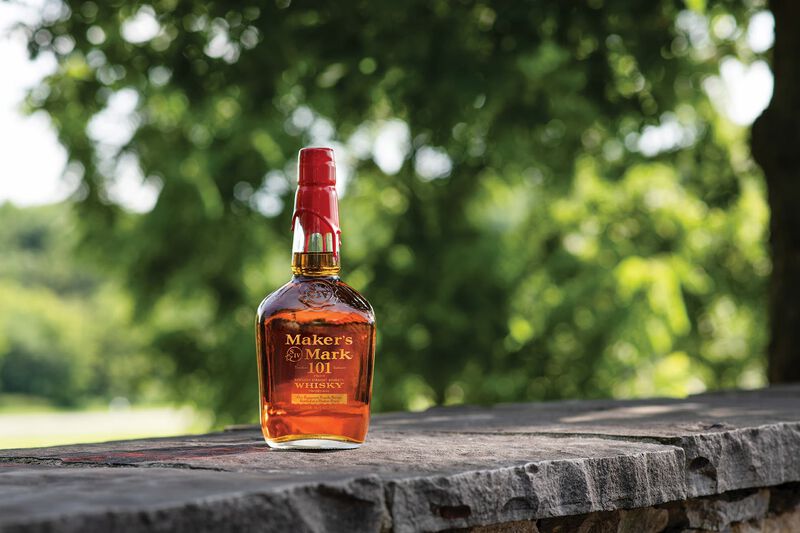
Parce Rum 12-Year Aged
Rum
Spirits Explained
Siobhan Raies, ReserveBar Spirits Contributor
Once used primarily as a shield to protect the precious liquid from the outside elements, wax-dipped bottles are now a time-honored tradition used for style and prestige. The art of sealing bottles with wax is a celebrated craft that dons the bottlenecks of liquor brands far and wide. From bourbon and scotch to rum and even vodka, the glossy cap is making a comeback. Although the wax seal has limited functional purpose today, its design is an ode to a long and fascinating history of artisanal bottling.
Sealing wax can be traced back to the Middle Ages when it was used to seal official communications of the wealthy and ruling classes. That fancy-looking red circle used to enclose important letters was usually embossed with a unique insignia that acted as a signature from the sender. Formulas varied, but the earliest recipe was created by blending beeswax with a resin extracted from trees.

By the 13th century, wax seals became more widespread and used by monasteries, guilds, and, eventually, common folk. Monasteries were the main centers of brewing and winemaking of the time, with medieval monks mastering the art of brewing everything from beer to wine. The clever idea to use the wax for more than just sealing envelopes was down to them.
Unlike the squeaky-clean conditions of today, bottles and casks were stored in dusty, damp cellars with no sanitation or fresh air — a real problem when it came to preserving the quality and purity of the liquid.
The humble cork was not enough to repel the harsh storage conditions of the cellars. Beyond air itself, things like moisture, heat, and rodents plagued the lifespan of the spirits the monks so ardently labored over. Therefore, sealing wax was the closest thing to an airtight seal they could devise, so the art of wax dipping bottles was born.
By the 1880s, the Industrial Revolution brought many innovations, one of which offered new and improved sealing capabilities that eventually rendered the wax seal obsolete. These days, however, wax seals are a charming reminder of a bygone era. Seeing them in the modern world marks a special or exciting occasion — I don't know about you, but I'm still awaiting my acceptance letter to Hogwarts.
Today, the resurgence of wax dipping bottles in the liquor world is used by many brands as a way to mark their dedication to their own history, heritage, and craftsmanship. For many, it's like a badge of artisanal production.
We can't talk about wax dipping without addressing one of the most iconic bottles on the liquor shelf. You know the one. Its emblematic red wax drips in rivulets down its square-shouldered silhouette and delights bourbon lovers across the world — the one and only Makers Mark.

The founders, Margie and Bill Samuels, were a true power couple. Bill was the genius behind the bourbon, but Margie was the mastermind behind the acclaimed branding and bottle design. The idea was born in Margie's kitchen using wax heated up in a deep fryer on their stove.
Each bottle is hand-dipped in a special formula of 400-degree crimson red wax in its Loretto, Kentucky distillery. It took over six months of tedious trial and error to perfect and achieve that rubber aesthetic. The actual dipping is handled by a team of in-house wax artisans that stand at the end of the bottling line to complete the dipping process.
The attention given to this incredibly time-consuming feat is something Makers Mark takes very seriously. They've garnered intrigue over the years from the many styles of wax seals that cross their shelves. The rarities in wax are a collector's item among whisky connoisseurs, from the skinny dipper to the no-nonsense dunker.
This growing trend has blazed a trail through the liquor industry. Brands are now getting creative with limited-edition wax colors and designer collaborations. Gin brand Sipsmith partnered with British fashion designer Paul Smith — resulting in two smiths becoming one. The limited-edition bottle featured multi-colored stripes and a black hand-dipped wax top to contrast the colorful design.
Many agree there's just something unique and dramatic about the presence of a wax seal, and it's often thought that we drink with our eyes before we drink with our mouths. That's how Bill Manley, the VP of Marketing for Surly Brewing Co., sees it. "Aesthetics are probably the biggest advantage for brewers wax dipping bottles," he says. "Wax makes the bottles look cooler." For him, wax dipping is a way of telling Surly patrons that the beer in the bottle is special. "Something to collect. Something to savor."
Scrolling through the listings on ReserveBar, you'll see the many bottles with a wax seal in all kinds of colors, shapes, and sizes. If you're anything like the many design enthusiasts out there, you'll be thankful the fine artistry of bottle dipping is alive and well.
Starting at $30.99